As employers move to embrace remote work, one of the biggest obstacles is their business phone system. A virtual phone system gives you much more functionality compared to landlines.
Old-fashioned phone systems are incompatible with this new normal. Team members aren’t in the office to take calls, nor do they necessarily have access to a desk phone.
The shift to remote and distributed work means that businesses need a virtual phone system.
So, can you run your business from a cloud-based phone system? Is it too difficult to set up? What features should I look for? We’ll cover all these and more in this comprehensive guide.
What is a virtual phone system?
A virtual phone system is a communications platform that handles your business calls through an internet connection. It lets users accept incoming and place outgoing calls on a desktop app, mobile phone, or desk phone.
Unlike traditional phone systems that only work in one location, you can use your existing hardware to work anywhere. If you have an internet connection, you can make and receive phone calls.
The biggest reason why companies move their phone system to the cloud is to take advantage of the advanced features that only a virtual phone system can provide. It enables companies of all sizes to enhance productivity and grow their team.
Virtual phone system providers maintain a scalable communications infrastructure for users. These providers maintain a scalable communications infrastructure for users. In addition to the VoIP phone service itself, they implement advanced features like SMS text messaging, business phone numbers, and voicemail transcription.
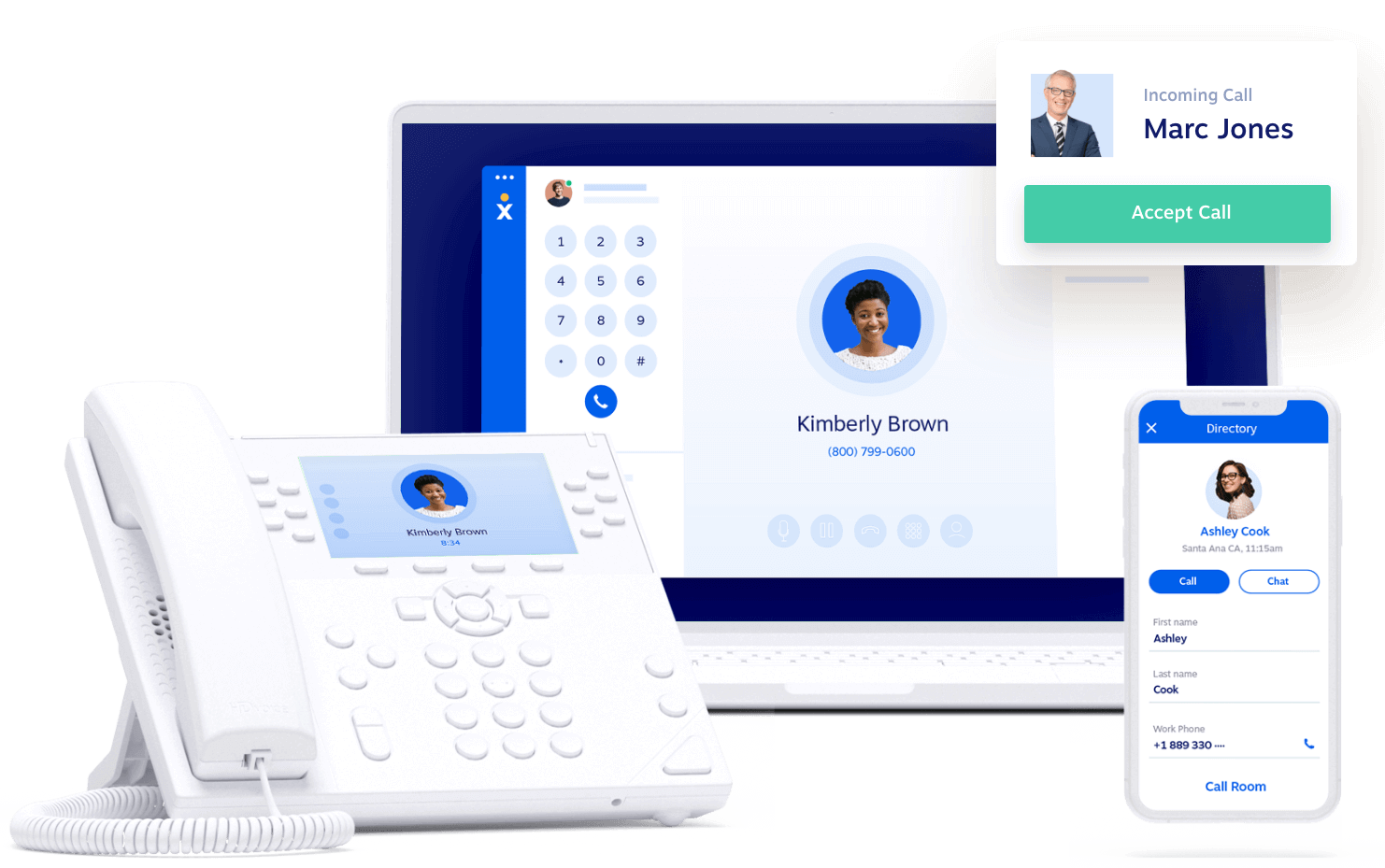
Simply put, a virtual phone system is a cost-effective way to keep your entire team connected. New research suggests that nearly 40% of companies have team members that work remotely. You’ll need a phone system that works in and out of the office.
How does a virtual phone system work?
A virtual phone system connects calls between toll-free and local phone numbers and users. Before your phone rings, there’s a lot of technological magic that happens.
These cloud phone services work by managing all the telecom infrastructure and relationships with the Public-Switched Telephone Network, better known as PSTN. That’s just for connectivity.
Voice over Internet Protocol (VoIP) exists at the core of a virtual phone system. Phone extensions exist virtually and not as physical lines. You can use any existing business phone numbers, even vanity numbers. From there, it converts your phone calls from analog sound with VoIP codecs to achieve superior call quality.
For optimal performance, VoIP providers set up a redundant network of data centers. In the event of severe weather, communications automatically failover to other servers without missing a beat.
local phone numbers
Likewise, a virtual phone system doesn’t terminate at your building. It exists on the internet. You can forward calls from your office phone to your cell phone with ease. If you’re taking time off, you can direct calls to another colleague.
On the front-end, users get a ton of new capabilities to work and collaborate effectively. From the moment an inbound call arrives, you can route them to an auto-attendant, which is sometimes called a phone tree. They can also exchange text messages with customers from the same platform as their business phone service.
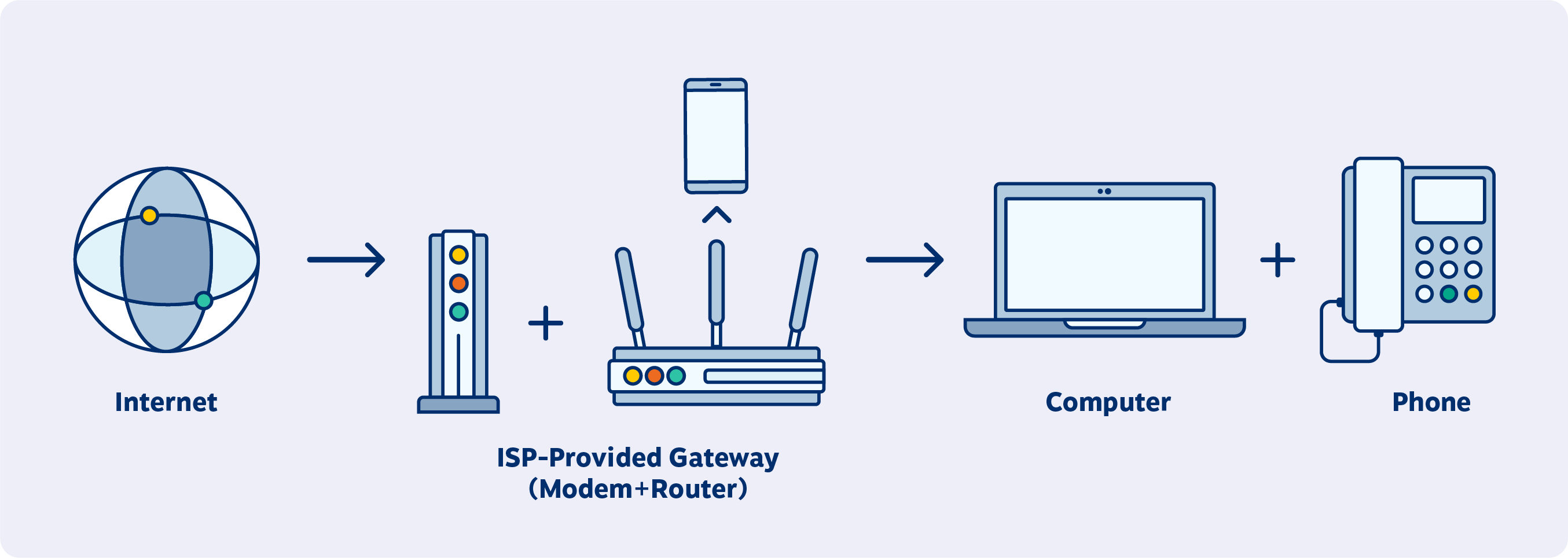
Landlines work much differently. You’re confined to wherever the telephone company installs it. Connectivity can only be established over wired connections. You also can’t ignore the increasing tolls and monthly fees. VoIP lets you place calls anywhere you have internet access — it works well with a strong Wi-Fi signal.
Virtual phone systems let you and your team take advantage of increased reliability, better call quality, and a wealth of advanced features to work better.
Differences between a PBX and a virtual phone system
If you’re not already using a VoIP phone service, you might be using a Private Branch Exchange (PBX) setup. It’s not fancy, but it works. Below is a breakdown of the key differences between a virtual phone system and a PBX.
| Function | Private Branch Exchange | Virtual Phone System |
|---|---|---|
| Interoffice calling |  |  |
| PSTN calling |  |  |
| Hardware requirements |  | |
| Ongoing maintenance |  | |
| Transport | Analog, ISDN, or PRI | Internet (100kbps per line) |
| Work-from-home ready |  | |
| Ease of setup | ★ | ★★★★★ |
| Voicemail transcription |  | |
| Text messaging |  | |
| Scalability | ★★ | ★★★★★ |
| Reliability | ★★★ | ★★★★★ |
| Cost per user | $$$ | $$ |
Benefits of using a virtual phone system
Not all business phone systems are made equal. You need more than standard phone service. Here’s why a virtual phone system is the preferred option for small businesses and enterprises.
1. Easy setup
One of the top advantages of a virtual phone system is that it’s easy to set up and use.
Traditional phone systems are difficult to configure. You need to wait for an installer to run wires and cut holes all around the office. During this time, your team won’t be able to make or receive phone calls. Can you afford to halt business?
A virtual phone system works wherever you have a high-speed internet connection. Since phone hardware is optional, you can get started right away. And when you get your VoIP phones, all you need to do is plug them in. That’s it.
Nextiva’s VoIP phone service is ideal for remote employees and in the office. You can set it up yourself without the need for IT — it’s that easy.
2. Lower costs
All too often, businesses pay for solutions and don’t use them to the fullest. This results in a lot of waste. A virtual phone system lets you select the right combination of features and lines that work for you.
Whether you need a complete office phone system or a small business phone plan, you get the most value by going virtual.
Nextiva’s virtual phone system provides a direct replacement for several business apps from day one. Don’t forget that you’ll save up to 65% compared to traditional phone systems. Built-in features save you even more. You will lower your costs with these premium features included:
- Auto-attendants and custom greetings
- Hold music and comfort messages
- Automatic call routing based on business hours
- Call forwarding to different phone extensions and locations
- Detailed call logs inbound and outbound call trends
- Managed caller ID to keep your cell number private
- Call recording for staff training
- Affordable international calling
All of these features make a virtual phone system a superb option for every business. It’s a budget-friendly option for small businesses. Plus, it contains every calling feature that enterprises have enjoyed for years.
3. On-demand phone numbers
If you have a remote team, it’s likely their phone numbers all have different area codes and inconsistent prefixes, making communication a hurdle. If it’s a challenge for you, just imagine how it is for your customers.
Virtual phone systems give your team a professional identity to level up their conversations. You have the option of using a toll-free number, picking out a local number, or even no direct-dial numbers altogether. It’s all up to you.
If you need to set up regionally focused phone numbers, you can. It’s a great way to make your calling campaigns more successful.
No matter the use-case, your team can always use the preferred phone number. The advanced call routing can direct calls to their mobile device, voicemail, or another person if desired.
Privacy is central to a virtual phone system. Your employees can conceal their caller ID to make and receive business calls without revealing cell phone numbers. Plus, it encrypts phone calls for maximum VoIP security.
4. Flexible device options
Wired phone systems require your team to take calls through a desk phone. That’s it. With Voice over IP, your team can communicate from a variety of devices.
Virtual phone systems adopt open, universal standards. This interoperability means you can take calls from any IP-based device, rather than only a desk phone. Example devices include:
- Desktop or laptop softphones
- iPads and Tablets
- Conference phones
- Android or iOS apps
- Wireless VoIP phones
These standards let you mix and match the right hardware for your individual. An executive has different needs than a support rep. These devices rely on the Session Initiation Protocol (SIP) for reliable business calling.
The best part? Our research has shown that 59% of business professionals already use at least three devices while at work. You don’t need to purchase any extra equipment. It works with the communications devices you already use.
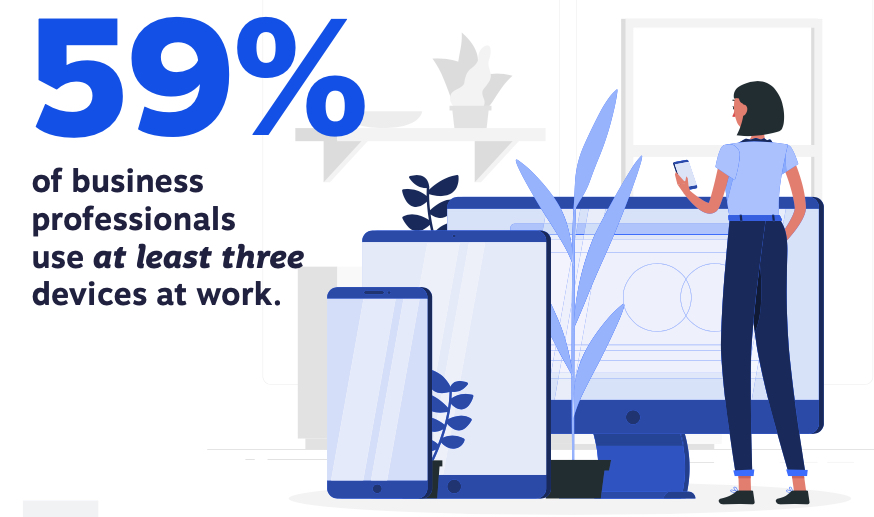
5. Intelligent call routing
Handle incoming phone calls with ease and direct them to the right people. If your team is only accessible by cell phone, you already know how frustrating it is to transfer calls. Virtual phone service providers eliminate this hassle.
First, you can direct business phone calls to your main number through an auto attendant. This function lets callers choose the department or person they wish to reach. Every business should have this set up.
Second, you can set up automatic call forwarding based on business hours. If you have an answering service, you can adjust this on your schedule from a friendly and straightforward interface.
Third, your team is in control of their availability. Users can adjust their forwarding or send callers to voicemail. This fine-grained control over phone service increases customer satisfaction and sales.
For steeper business needs, look no further than a cloud-based call center. It lets you leverage advanced features like skills-based routing, artificial intelligence, call queuing, and interactive voice response (IVR) to handle any call volume. It’s all virtual, too!
6. Robust analytics and reporting
What days of the week are the busiest? What does call volume look like over the holidays? Do we need to hire more agents? These questions can only be answered with real-time call analytics and reporting.
These dashboards can help you manage the volume of calls and tie them to business results. Historically, only enterprise-sized organizations had these capabilities. Now, small businesses can use analytics to scale.
Virtual phone systems make this data easy and accessible. It’s instrumental if you’re managing call center agents. You can enhance the team’s one-on-one performance reviews. You don’t need to manually keep track of their time nor micromanage their time on the phones.
And, the best part: You can view real-time reports and call analytics through an internet connection on any device. You and your team will be on the same page.
7. Increased team collaboration
This is where the rubber meets the road for remote teams. Your remote team needs to answer questions promptly. You can’t let projects be held up due to communication breakdowns.
Instead of juggling multiple messaging and communication apps, you have one. Instead of dialing a colleague, you can send them a quick text message. It’s less formal than an email and faster, too. Plus, it doesn’t ping everyone else in your project management app.
Audio and video conferencing is a staple of any virtual phone system. You can bring your team together in one click and provide the dial-in for those without a strong VoIP connection. For further productivity gains, you can centralize your projects and team collaboration within Cospace.
It’s not just for your internal team. You can set up a dedicated conference line for your clients so they can get the hands-on engagement they need. These virtual workspaces promote a collaborative approach to business communication.
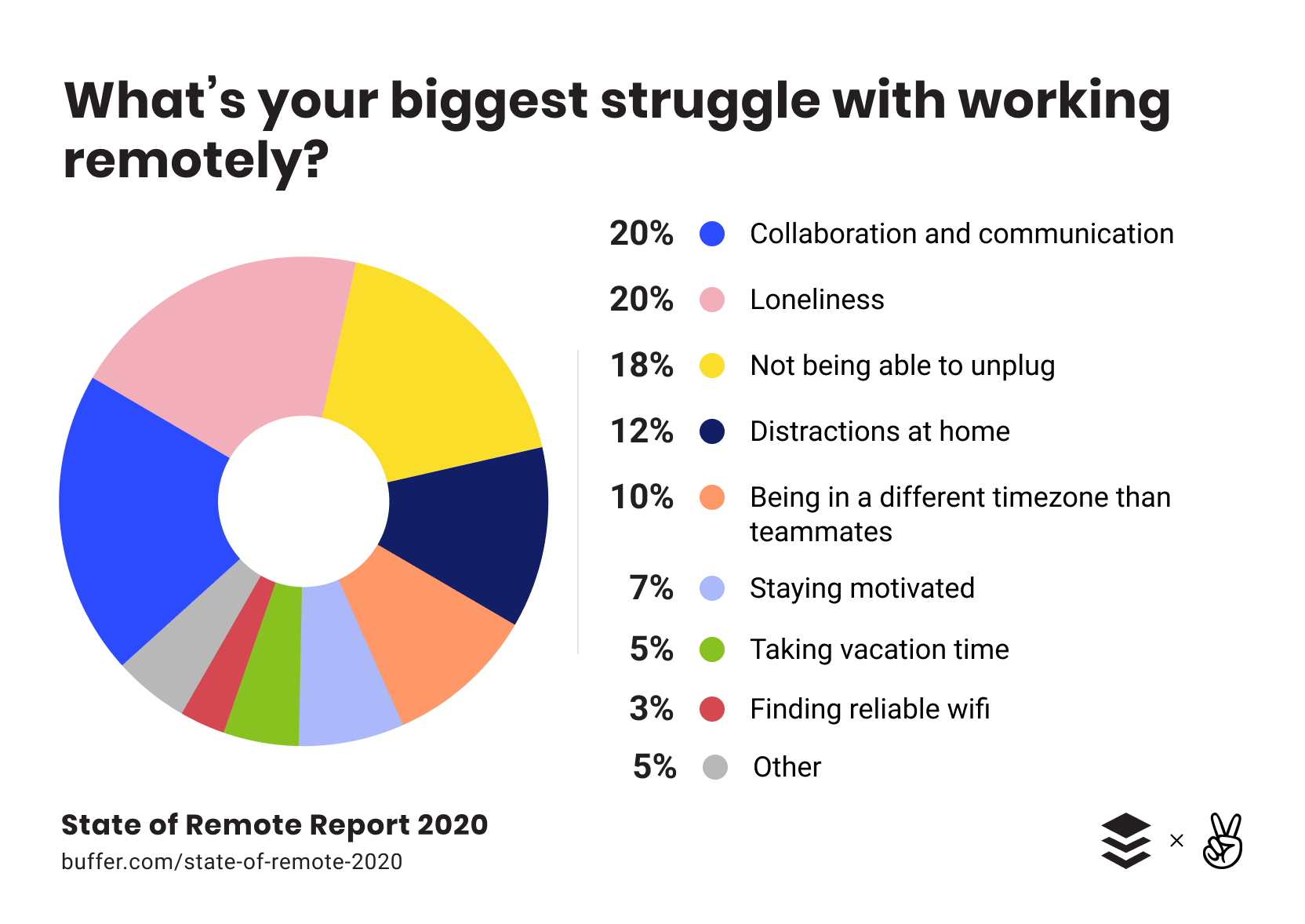
Buyer’s checklist for your next phone system
It can be a bit overwhelming to think about upgrading your phone system. It’s easier than you think. Here are our recommendations to help select the right phone system.
- Accreditation – Does the business phone system meet industry standards? PCI, HIPAA, and SOC 2 are examples of trusted accreditations.
- Reliability – Any recent downtime in the last year or two? Check their status page as well as Downdetector for guidance on real-world uptime. Look for 99.999% uptime or better.
- Functionality – This is the big one. Identify which features you need versus want. There are hundreds of VoIP features available. Anticipate your needs over the next couple of years.
- Setup – Determine if you can set up your phone service on your own or will you need an installer? Can you get up and running with no impact on routine operations?
- Support – What the availability and additional cost of support. How can you get help (phone, email, chat)?
- Reputation – Check out their online reviews. GetVoIP and G2 are good sources to check. Do most users enjoy their virtual phone service?
- Cost – Cost is almost always a factor, so get clear on the monthly fees, one-time charges, and add-ons. Consider the cost savings from getting rid of your on-premise PBX, too.
- Hardware – Can you select ready-to-use VoIP phones and have them shipped to your team? Is it from a reputable manufacturer?
Virtual phone system FAQs
We’ve answered the most common questions about virtual phone systems below. Of course, if you have more specific questions, let us know!
What is the best virtual phone system?
Out of nine virtual phone systems, U.S. News & World Report rated Nextiva #1. Nextiva scored the highest in performance, reliability, range of features, and customer support. Also, Nextiva is the best-rated phone system listed on GetVoIP from over 1,600 customer reviews.
How do I set up a virtual phone system?
You can set up a virtual phone system in just four steps:
- Choose a business phone plan.
- Assign your phone numbers.
- Record your phone greetings.
- Begin placing and answering calls.
Which phone numbers can I use?
A virtual phone system supports any assigned phone numbers you own. To use your existing business phone number, you will need to transfer it through a process known as porting. It takes approximately 1-4 weeks, depending on your current phone service provider.
You can also pick out a virtual phone number when adding or changing phone extensions. Likewise, you can use or drop these phone numbers if you no longer want them.
You can also use toll-free numbers with a virtual phone system, but transferring them takes a little bit longer. Check with your VoIP provider for porting requirements.
How much does a virtual phone system cost?
A virtual phone system’s cost ranges from $17 to $80 monthly per user, depending on the features. VoIP desk phones cost between $75 and $350 each based on their capabilities.
Unlike traditional phone systems, there are no service contracts, IT costs, weather outages, and obsolete hardware to maintain. Companies can save up to 65% on their business communication costs.
What are the top features of a virtual phone system?
There are hundreds of features in a virtual phone system, but here are the top features for business users:
- Mobile and desktop apps
- Advanced call management
- Dynamic call routing
- Anonymous Call Rejection
- Auto attendant
- Text messaging
- Call analytics
- Call forwarding
- One-click conferencing
- E911 fidelity
Can a virtual phone system be used at home?
A virtual phone system can be used from home and in the office without any hardware to set up. All you need is an internet connection to make and receive phone calls from your business line. Almost all cable and DSL connections can support the needs of a modern VoIP phone system.
Virtual phone systems give remote employees the freedom to work anywhere using only their laptop, mobile device, or desk phone. Customers and coworkers won’t notice a difference. Pair it with your CRM for an added boost to your productivity and workflow.
Follow our handy guide on how to set up VoIP to see how easy it can be.
What’s the difference between a PBX and virtual phone system?
A Private Branch Exchange is a traditional phone system that uses analog signals. Virtual phone systems convert analog signals into digital and transmit them through the internet. They both provide phone functionality, but in different ways.
The key differences between a PBX and virtual phone system are how calls are handled and how it connects to the Public-Switched Telephone Network. Virtual phone systems cost much less and have much more scalability than a traditional PBX.
Learn more in our detailed PBX and VoIP comparison guide. It breaks it all down for you.
Can startups use a virtual phone system?
Early-stage companies stand to benefit the most from a virtual phone system. As you add sales and service roles, you need to make sure your team is accessible and available for team huddles. Startups can add and adjust features to fit their business needs such as call forwarding, call tracking, and call recording.
Curious about how many phone lines you need? It’s more than you might think.
The best virtual phone system is here
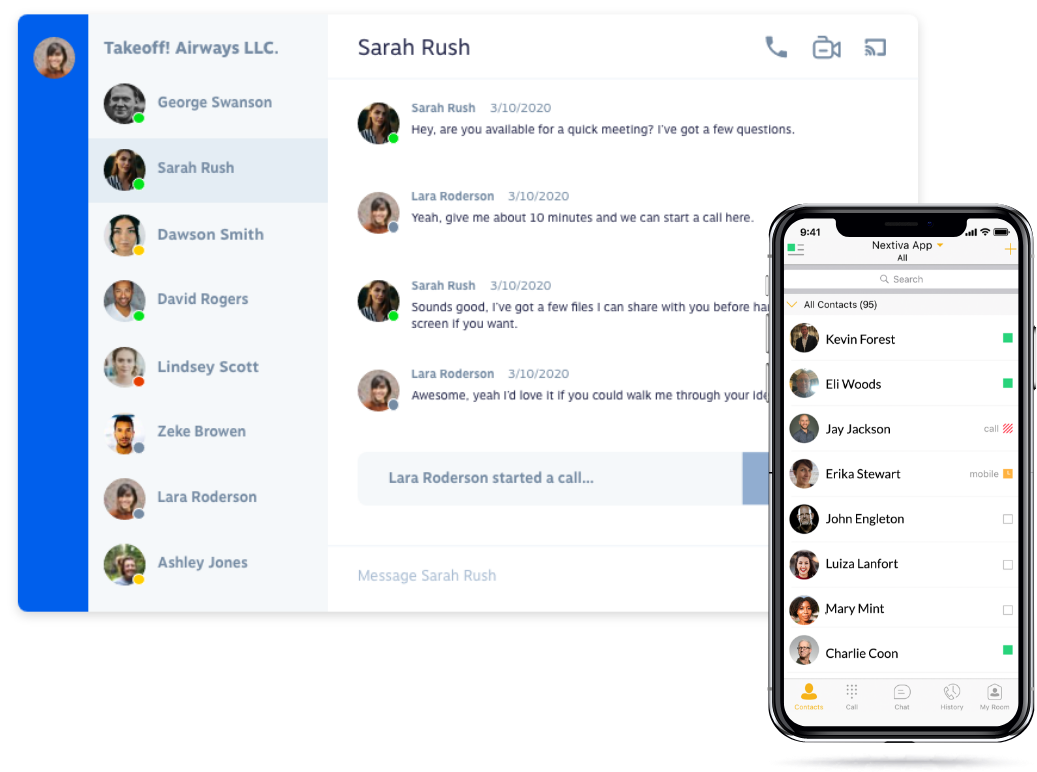
The way we work has changed. Even when everyone gets back to the office, will you really want to go back to a limited, obsolete phone system? Not likely.
Your team is ready for you to select a phone system made for remote employees. You don’t have time for games or sharing GIFs. You need it to handle incoming calls with the utmost reliability. It also needs to be dead-simple for everyone to use.




thanks for the blog